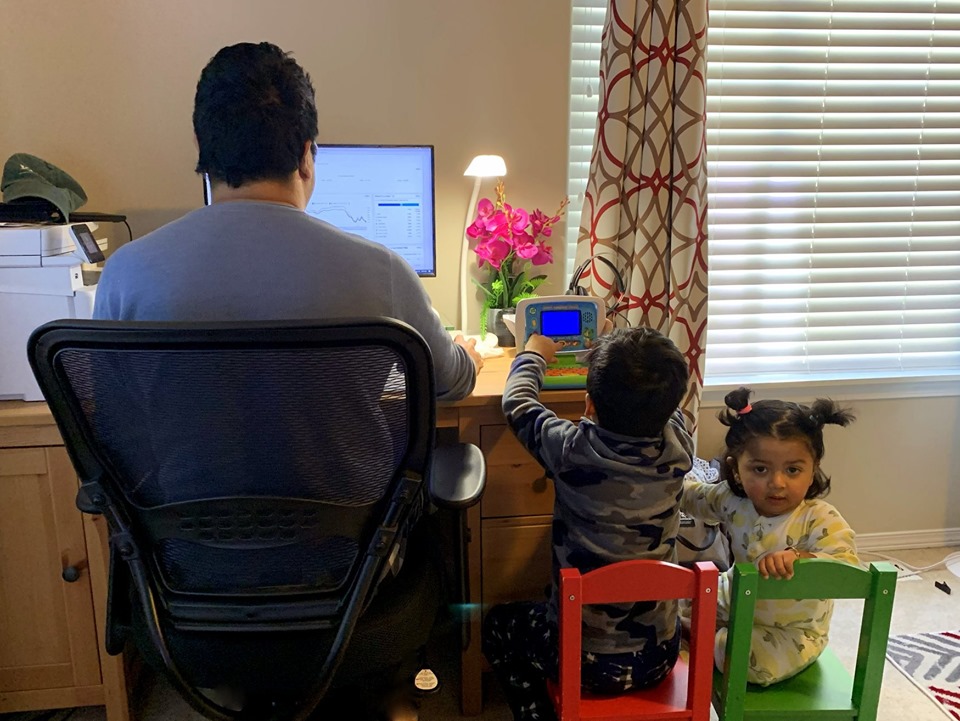
We Now Can Relate To The “BBC Dad” – How Covid19 is Reshaping the Way We Work and Live
A few years ago, the BBC Dad video went viral on the internet, evoking compassion, some criticism, and mostly, amusement. Ironically, in these last two months of home quarantine, we all got a taste of it during our Zoom calls – It is now a lived experience for every young parent and pet owner.
Covid19 pandemic has changed the world – one big shift is the way we do our job as knowledge workers. According to the author and thought leader, Daniel Pink, we are going through a “massive experiment.” It will be interesting to see how it reshapes our perceptions in terms of remote work, the separation between work and home life, and the culture of an 8-hour workday.
Remote Work

Pre-Covid19 time, the norm was that people would be physically present in the offices. Only a minority of the employees did remote work, and often they felt disadvantaged.
Physical proximity and in-person connections trump any virtual ones. No app could replace the warmth of a handshake/hug or a water cooler conversation. On the other hand, the requirement of physical presence has imposed an enormous burden on many – either live in a metropolitan area or succumb to crazy commutes. Jordan, an experienced software developer, commutes 4-hour 4-days/week from Olympia to Seattle. During this home quarantine time, he is getting more sleep, and it is giving him a productivity boost that otherwise was impossible.
Kristine, an engineer and a mom mentioned,
Overall many companies are realizing that people don’t need to be in the office to be productive. After this is over, I am hoping to be allowed to work from home officially, which in turn will make my work/life balance better.
Separation of Work and Home Life
People at work used to see our professional selves while our spouse/partner and children saw our personal sides. Nowadays, we expect and welcome that a child or a pet would make a cameo appearance during a work video call.
“It is making things much less tense and more human in work meetings,” said Irina, a mid-level tech professional in Austin and a mother of two. “My daughters are seeing my husband and myself in work mode – they are pretending to be mommy-at-work these days,” she added. “It is instilling the role models so naturally in their minds”!
Due to the absence of rigid boundaries and child care help, some parents are letting their kids be by themselves with minimal supervision instead of usual helicopter parenting. Research has been saying it all along to let the kids have unstructured time, be bored so that they can use their creativity and imagination. A recent post on Facebook showed some kids are enjoying a slide made out of cardboard boxes – an example of free play, that many kids this generation do not have the time or the opportunity.
View of Work Hours – 8-Hour VS Short Bursts
The 8-hour workday concept came as a social movement during the industrial revolution (early 19th century), to regulate the length of a working day to improve the condition of the workers. At that time, the working day could range from 10 to 16 hours, the workweek was typically six days a week, and the use of child labor was common.
For modern knowledge workers, eight hours a day has become obsolete. According to this article by a world-renowned expert in emotional intelligence, Dr. Travis Bradberry, the brain naturally functions in spurts of high energy (roughly an hour), followed by spurts of low energy (15–20 minutes). As we are working from home while taking care of our families and household responsibilities, we have a unique opportunity to experiment with this burst mode of productivity.
I find that taking care of some dinner prep in between meetings gives me the well-deserved short break and peace of mind that I don’t have to stress in the evening.
It is important to note that it is unrealistic (read a recipe for burnout) to expect people to work full time, parent, and homeschool simultaneously for a more extended period. We are going through a crisis due to the pandemic and trying to make things work while following the shelter in place order.
A culture shift is a slow and organic process. While as individuals, families, communities, we have our unique perspectives, one doesn’t have to be a Nostradamus to predict that this experience will reshape many of our norms and behavior. I believe we will come out stronger on the other side, more appreciative and holistic.
This article was published on Thrive Global, We Now Can Relate To The “BBC Dad” – What Else Is Shifting?
SURVEY: EMPLOYERS ARE TURNING TO “EXTREME FLEXING” TO SUPPORT WORKING PARENTS




